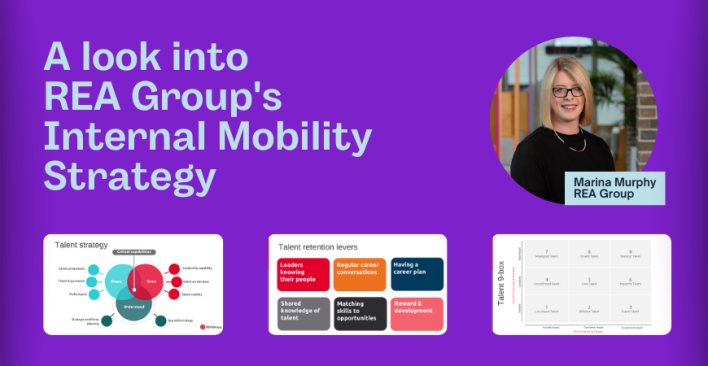Expert: ‘Transboarding’ is critical when managing the internal talent pipeline

When most people think of getting a new job, they often begin looking outside their current employer. When they do that, they’re overlooking the numerous opportunities that are right in front of them — other jobs within the company.
As employers actively look for productive, motivated employees to fill open positions, many mid-to-large-sized employers have turned to recruiting internally, according to Lisa Sterling, executive vice president and Chief People Officer at Ceridian. She calls the overall process “transboarding,” as a play on words related to onboarding a new employee.
“Transboarding’s impact on the workplace is substantial,” she says. “For one thing, it’s not a trend; it’s a reality in today’s world of work. And a poor transboarding experience can lead to disengagement and potentially lost talent.”
When you consider that many surveys put engagement in the low to mid-30 percent range, that’s a risk not many employers are willing to take, Sterling says.
The reason for transboarding
 So what is transboarding? For one thing, it’s not solely an HR or people issue. To Sterling, transboarding represents a leadership opportunity requiring commitment to people, and an understanding of the importance of workplace culture (and subcultures by function). It also involves “fit” and the importance of personal touchpoints — such as setting up connections for a new role within the existing organisation, discussing goals, objectives and more — to ensure a smooth transition and continued career success.
So what is transboarding? For one thing, it’s not solely an HR or people issue. To Sterling, transboarding represents a leadership opportunity requiring commitment to people, and an understanding of the importance of workplace culture (and subcultures by function). It also involves “fit” and the importance of personal touchpoints — such as setting up connections for a new role within the existing organisation, discussing goals, objectives and more — to ensure a smooth transition and continued career success.“People will need to be more agile and faster in their transboarding experiences in the future due to several societal trends,” she says. Those include an aging workforce and more people retiring, meaning more people are shifting into new positions within organisations. It’ll also include shifts in projects and managed resources requiring flexible project-based teams and new work/life mindsets, such as employees valuing the ability to come in and out of workforce depending on life situations and changes.
[bctt tweet=”‘Transboarding’ – Onboarding existing staff to a new role within the organisation.” @lisamsterling” username=”ATCevent”]
When combined, those trends require more flexible ways to track employee movement throughout organisation. By thinking about how technology tracks coming, going and transitioning employees, Sterling explains, HR leaders can look for trends that will help them better manage workforce staffing needs, such as future training needs to help team members move into new roles once projects are completed.
Sterling offers some ways employers can prepare for and successfully transition existing staff to a new role within the workforce:
 Make sure transboarded employees have access to the right resources to help them succeed, be it technology/tools and/or people, such as team members and mentors.
Make sure transboarded employees have access to the right resources to help them succeed, be it technology/tools and/or people, such as team members and mentors.- Ensure transboarded employees understand the vision and values of their new workplace function, which may be different from the function that they were in previously, within the same organisation.
- Provide transboarded leadership with educational opportunities needed to manage and lead a diverse workforce, taking into account differences in geographical location, tenure, personalities and more, and hold leaders accountable for the overall experience and engagement of employees.
- Give transboarded employees clear expectations about what success looks like from the beginning and hold them accountable.
Sterling also offers several ways employers can utilise human capital management (HCM) in a seamless transition. For example, cultural assimilation and engagement of an employee who is transferring roles and joining a new team (potentially) within the company can be achieved with connectivity, communication and collaboration.
Other strategies include:
- Provide a channel — through HCM technology — to create awareness of how the employee’s new job activities impact the overall company. Performance development solutions can be key here, as the goals and objectives of the individual likely will have changed and they will need a way to reset and realign.
- Leverage personal/team “relatability” assessments to understand how transboarded employees can work best with others, and drive higher level of interactions between managers and employees and teams.
- Automate transfer information into all HCM processes for accuracy, efficiency and productivity, and a seamless employee experience when transboarding from role to role.
[bctt tweet=”Poor transboarding experience can lead to disengagement and potentially lost talent” username=”ATCevent”]
“By engaging people faster (both transboarded employees and new hires), organisations can recognise decreases in potential first year attrition and better enable employees to do their jobs,” Sterling says. “Though connectivity, communication and collaboration are enabled by HCM technology, the real key to a successful transboarding is commitment – by leaders – to creating a personalised and delightful employee experience.”
Images: Shutterstock
This article first appeared on hrdive.com on September 20th, 2016.
Related articles
Leave a Reply
Sign up to our newsletter
Get a weekly digest on the latest in Talent Acquisition.
Deliver this goodness to my inbox!


